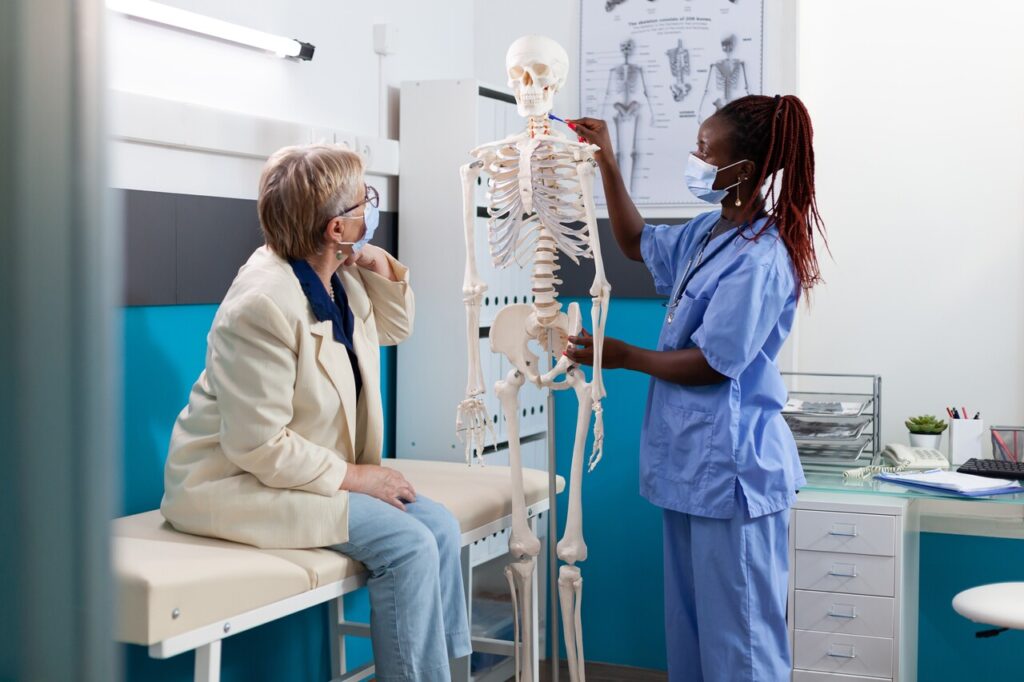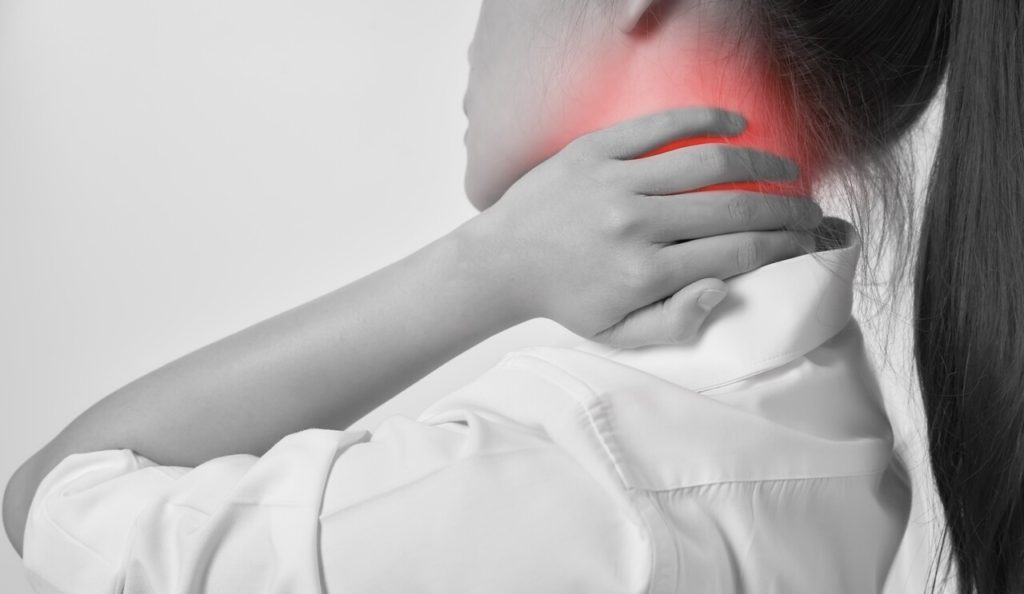Cervical Pain
A pain-free neck is like our carefree childhood, which we do not cherish until we encounter the infamous pain. Undoubtedly, cervical pain or neck discomfort can make life very difficult, affecting your social life, family time, interests, or even efficiency at the workplace. If you’ve just woken up with a sudden pain in your neck, had an accident, or have been coping with cervical spondylosis, this blog can help you understand the cervical spine, multiple causes and forms of neck pain, and more about different cervical pain treatments.

The cervical spine is connected to bones, neurons, joints, and muscles located together and serves an essential function in giving head support and movement. Cervical discomfort can aggravate from moderate and easily overlooked to agonizingly sever, obstructing everyday tasks like dressing, concentrating, or sleeping. Thus, cervical pain can cause stiffness in the neck and reduce the range of motion.
Signs and Symptoms
- Patients suffering from cervical pain and discomforts frequently describe their necks as “tight” or “frozen”, as cervical pain can occasionally leads to a reduction in flexion and extension.
- Intense pain or “knifing” discomfort in one region of the neck can be experienced.
- Shifting, twisting, or stretching your spinal cord from side to side or up and down might aggravate cervical pain.
- Inflammation or numbness that radiates and the discomfort in your neck can spread to your head, shoulder, and arms. If a nerve is compressed in your neck, you may experience numbness, tingling in both of your arms or hands.
- Pinched nerve pain in the neck might feel like scorching or severe pain.

Cause of Cervical Pain
Cervical pain, stiffness, or tightness can occur for several causes. Muscle stress is typically caused by actions and habits such as bad posture. Moreover, sitting at a table or on a chair for an extended period without shifting positions can cause cervical pain. Or while sleeping with your neck in an incorrect posture, another reason can be jarring your neck when exercising.
The neck is especially prone to damage in falls, vehicle accidents, and sports, as the muscles and ligaments are pushed to move outside of their typical range. If the spinal is injured, the neck bones (cervical vertebrae) are shattered or damaged, caused by an abrupt jerking of the neck and head.
Radiating Pain
Health disorders that impact the nerves in your system might produce radiating pain. As a result, the initial pain location extends to a greater body region, causing severe pain. Symptoms that punch or pull on a nerve, such as a bulging disc, can cause cervical radiculopathy or pinch nerve pain. Pain spreads via related neural connections to other parts of your body. Moreover, it would be best to visit a doctor right when you get radiating pain since it might indicate more severe nerve injury.
Sciatica, spinal herniated discs, piriformis syndrome, spinal stenosis, and other medical problems can cause radiating back discomfort. Moreover, factors that influence the nerves in the low back can cause intense pain to radiate down the legs. The pain might be severe or minor, affecting one or both legs and can produce numbness or tingle in the hands and feet and muscular weakening.
Signs and Symptoms
Nerve sensations and radiating pain can be frightening for people. Inflammation, stiffness, numbness, pain, weakness, or a heavy feeling in the upper limbs are apparent symptoms. These sensations might sometimes be an indication of nerve injury. If you have any symptoms, you should take these things seriously and seek medical treatment. Even if you believe your problems are minor, we recommend that you have them evaluated before they worsen and become more serious. A comprehensive examination and consultation with a spinal expert or physiotherapist might be crucial in arriving at the correct diagnosis.
Cause of Radiating Pain
Soft tissue injuries are common causes of shoulders and back discomfort. Muscles, tendons, and ligaments are examples of soft tissue. The shoulder joint comprises four tendons that connect your upper arm (humerus) to your shoulder blade. A rotator cuff rupture can result from a single accident (such as a fall) or through repetitive stress over time, which is frequent in sports involving many arm and shoulder motions.
Moreover, rotator cuff tears can also happen due to aging. A decrease in blood flow can impair the body’s natural capacity to heal damage. Furthermore, bone spurs can grow at the joint, causing rotator cuff damage.
Cervical and Radiating Pain Self-Care
When neck and shoulders discomfort start, there are several early therapy options available. If the discomfort worsens with particular movements or tasks, such as doing housework or engaging in activities, a day or two of rest can be beneficial. For example, if working in the garden aggravates the pain, avoid it rather than pushing through it. It is recommended to try to become active again after relaxation. On the contrary, resting over an extended period can cause back muscles to weaken, leading to additional discomfort. Moreover, heat and ice treatment administered within the first few days after the pain begins can provide relief.
Treatment
- Adjusting one’s seating posture
- Obtaining adequate rest
- Modest stretching and exercises
- Living a healthy lifestyle
- Physiotherapy

Suppose your physiotherapist discovers some difficulties related to severe cervical or radiating pain. In that case, physical therapy treatment can be started immediately to help you get back on the path to recovery and return to your daily tasks.
If any tests reveal more severe issues, your physiotherapist can work with a physician or surgeon to acquire specialized medical tests, including ultrasound and an MRI. Moreover, your physical therapist will work collaboratively with physicians and other health care professionals to ensure that you receive the necessary treatment and care.
How Do We Treat Our Patients?
Call doctor takes the chance to get to know patients’ cervical or radiating pain and learn about their underlying medical concerns and lifestyle. We take delight in ensuring that every consultation is complete and thorough. During the initial appointment, we will take a detailed history of cervical and radiating pain and do a thorough medical examination to provide the groundwork for developing an appropriate diagnosis and treatment plan.
Remember, if your cervical pain or radiating pain persists or worsens, you should seek immediate medical attention. Our experts will offer the best course of action like injections, medicines, ultrasound, physiotherapy, and home healthcare to bring you back to living a pain-free life.




